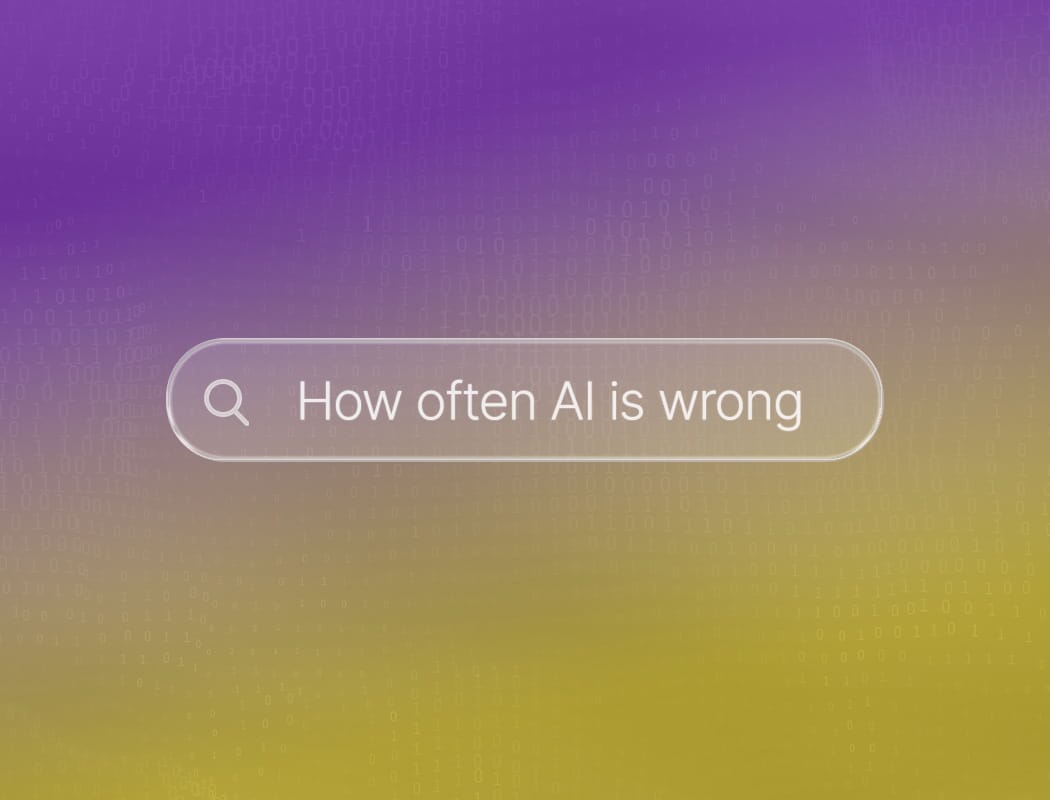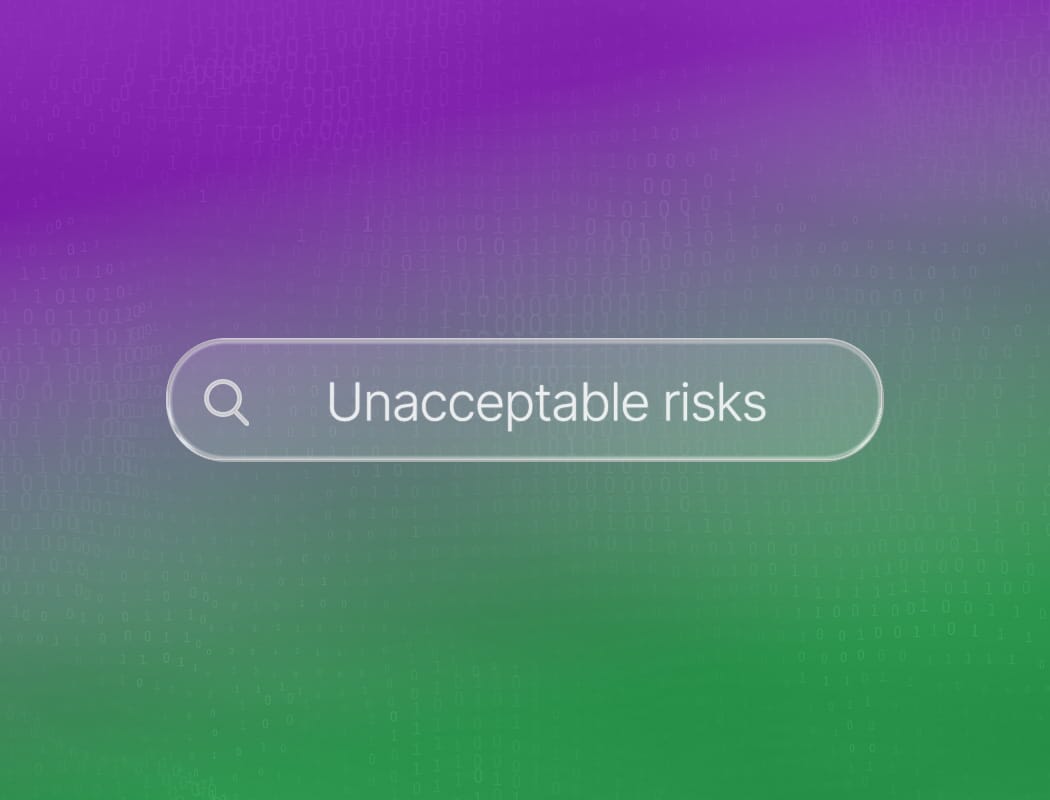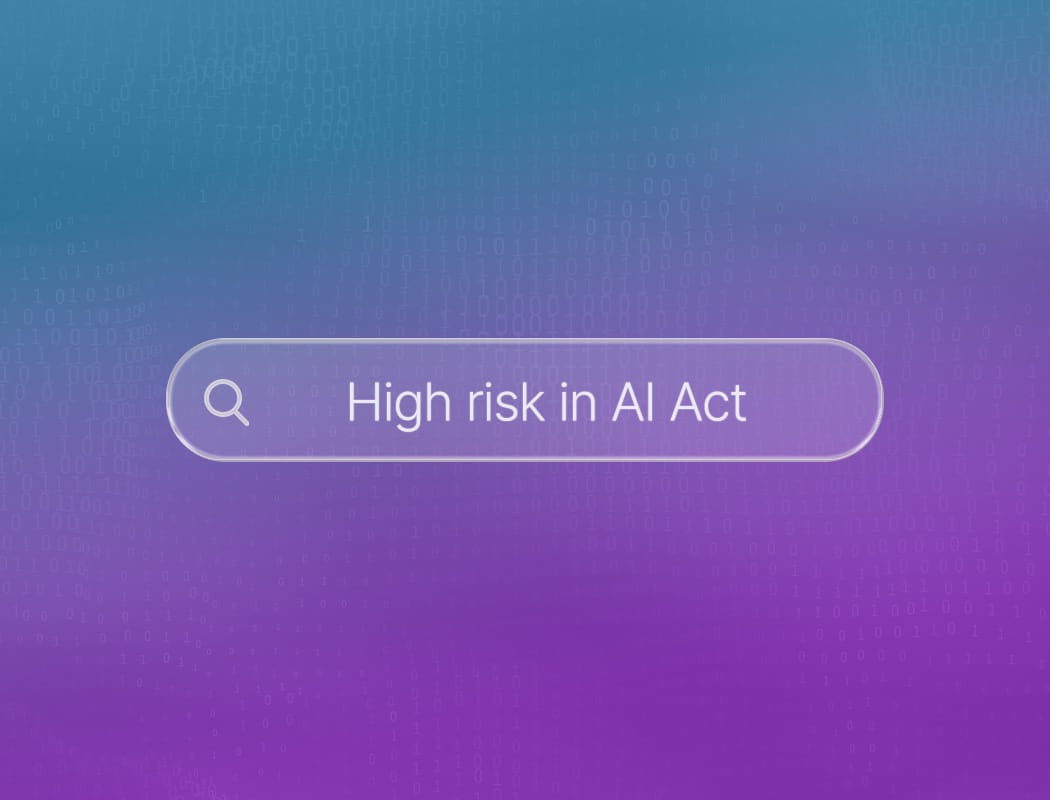How often is AI wrong?
AI is impressive, but it’s far from perfect. Sometimes it nails the answer. Other times, it misses the mark completely.
The truth is, AI accuracy depends on many things. It can be influenced by the quality of data, the complexity of the question, and even the way you phrase your request.
Take the accuracy of Google’s AI Overview, for example. Someone asked how to make the ingredients stick, and it suggested putting glue on pizza. This was an answer that was confidently delivered, but completely wrong. The backlash was so strong, Google had to scale the feature back.
This example illustrates how AI can sometimes be confidently wrong, especially when it misreads the context.

How is the accuracy of AI measured?
AI accuracy is about how well a system’s predictions match expected results. It’s a measurable thing, you can think of: numbers, percentages, data points. If an AI guesses correctly based on the information it’s given, it’s considered accurate.
But here’s the catch: accurate doesn’t always mean true. An AI might predict something right within the scope of its data, but still miss the full picture. That’s because AI doesn’t understand context the way people do.
For example, a model might forecast stock prices based on trends and get it right. But it won’t catch a surprise event like a scandal or a policy change unless that kind of thing was part of its training.
So while accuracy gives us a sense of how well AI performs in controlled conditions, it doesn’t guarantee real-world truth. That’s why it’s smart to treat accurate AI predictions as helpful, but not flawless.
How does AI make mistakes?
When we talk about AI accuracy, we are really talking about how close an AI comes to making the right call. But there are plenty of reasons why things can go wrong.
Let’s explore the main causes behind AI mistakes and see what happens when machines get it wrong.
Data quality matters most
AI learns from data, and if the data is flawed, so is the AI. Imagine teaching a child with a book full of errors. The child will repeat those mistakes. In the same way, if an AI is trained on incomplete, biased, or outdated information, its decisions will reflect those problems.
This is one of the biggest threats to AI accuracy. Clean, diverse, and up-to-date data is essential for reliable results.
Algorithms have limits
Every AI runs on algorithms, which are like recipes for solving problems. But no recipe is perfect. Sometimes, the instructions are too simple or too complex for the task at hand.
If the algorithm cannot handle certain situations, the AI will make mistakes. These errors might show up as odd recommendations, missed patterns, or even total confusion when faced with something new.
Human choices shape outcomes
Humans design, train, and fine-tune AI systems. Every step involves choices, from which data to use to how to measure success. If these choices are rushed or based on assumptions, the AI may inherit those flaws.
For example, if a team overlooks a key group of users, the AI might not work well for them. Human judgment is always part of the process, for better or worse.
The world keeps changing
AI accuracy can drop over time because the world does not stand still. Trends shift, language evolves, and new challenges appear.
An AI trained last year might not understand today’s problems. Regular updates and retraining are needed to keep AI sharp. Without this, even the best system will start making more mistakes as reality moves on.

Which factors influence AI accuracy?
You can do many things to increase the accuracy of AI. From the quality of the data they learn from, to the way they’re built, to how they’re tested in the wild, every step matters.
Let’s take a closer look at what really makes the difference when it comes to AI accuracy.
The role of data quality
We now know that the information fed into an AI system forms the foundation for everything it does. If the data is full of errors, outdated facts, or biased examples, the AI will pick up those same flaws. Clean, diverse, and well-labeled data helps the AI recognize patterns more reliably.
It’s not just about having lots of data, but about having the right kind. For example, if you want an AI to identify animals in photos, you need clear images of all kinds of animals, taken in different settings and lighting conditions.
The more variety and accuracy in your data, the better your AI will perform. In short, the path to high AI accuracy starts with careful attention to the data you use.
Model design and complexity
Building an AI model is a bit like designing a race car. You need the right balance of speed, control, and reliability. Some models are simple and fast, but might miss important details. Others are complex and powerful, able to spot subtle differences, but they can be harder to train.
The architecture of the AI (how its “brain” is wired) plays a huge role in how accurately it can process information. Choosing the right algorithms, tuning the settings, and making sure the model isn’t too simple or too complicated are all crucial steps.
If the model is too basic, it won’t catch the nuances. If it’s too advanced for the task, it might start seeing patterns that aren’t really there. Striking the right balance is key to achieving reliable AI accuracy.
Testing and real-world feedback
No matter how good your data or how clever your model, the real test comes when you let your AI loose in the real world. This is where you find out if it can handle surprises, new situations, and the messy details of everyday life.
Rigorous testing means putting the AI through its paces with fresh data it hasn’t seen before. Gathering feedback from users and monitoring performance over time helps you spot weaknesses and make improvements.
Sometimes, what works perfectly in the lab falls apart in practice. That’s why ongoing testing and updates are essential for maintaining high AI accuracy.
What are the consequences of AI being wrong?
When AI gets it wrong, the consequences can ripple far beyond a simple mistake. Unlike a typo in a text or a missed appointment, an error from artificial intelligence can affect thousands or even millions of people at once.
The stakes are high because we trust AI to make decisions quickly and at scale. Sometimes, these mistakes are harmless or even funny. But other times, they can be costly, dangerous, or deeply unfair.
Let’s look at what happens when AI misses the mark.
Loss of trust and credibility
Trust is fragile. When AI makes a mistake, especially a public one, people start to question the technology itself. Imagine a bank’s AI system denying loans to qualified applicants or a medical AI misdiagnosing a patient.
These errors don’t just hurt individuals, they shake our faith in the organizations using AI. Once trust is lost, it’s hard to win back.
Companies may face backlash on social media, negative press, or even legal trouble. People become wary of relying on AI for important tasks, slowing down adoption and innovation.
Financial and operational impact
AI mistakes can hit where it hurts most. A faulty algorithm might recommend the wrong products, leading to lost sales and wasted marketing dollars. In logistics, a routing error could delay shipments and upset customers.
For businesses, these errors mean more than just embarrassment. They can result in real financial losses, regulatory fines, or expensive recalls. Fixing these problems often requires time, money, and human intervention.
Teams scramble to patch systems, investigate what went wrong, and reassure customers. The cost of cleaning up after AI can sometimes outweigh the benefits it was supposed to bring.
Ethical and social consequences
When AI gets it wrong, the effects can go beyond numbers and profits. Sometimes, the harm is deeply personal or societal. Biased algorithms can reinforce stereotypes or discriminate against certain groups.
An AI-powered hiring tool might overlook qualified candidates because of their background. In law enforcement, a flawed facial recognition system could lead to wrongful arrests.
These aren’t just technical glitches, they’re ethical failures that can damage lives and communities. As AI becomes more woven into daily life, its mistakes have the power to shape society in ways we’re only beginning to understand.





